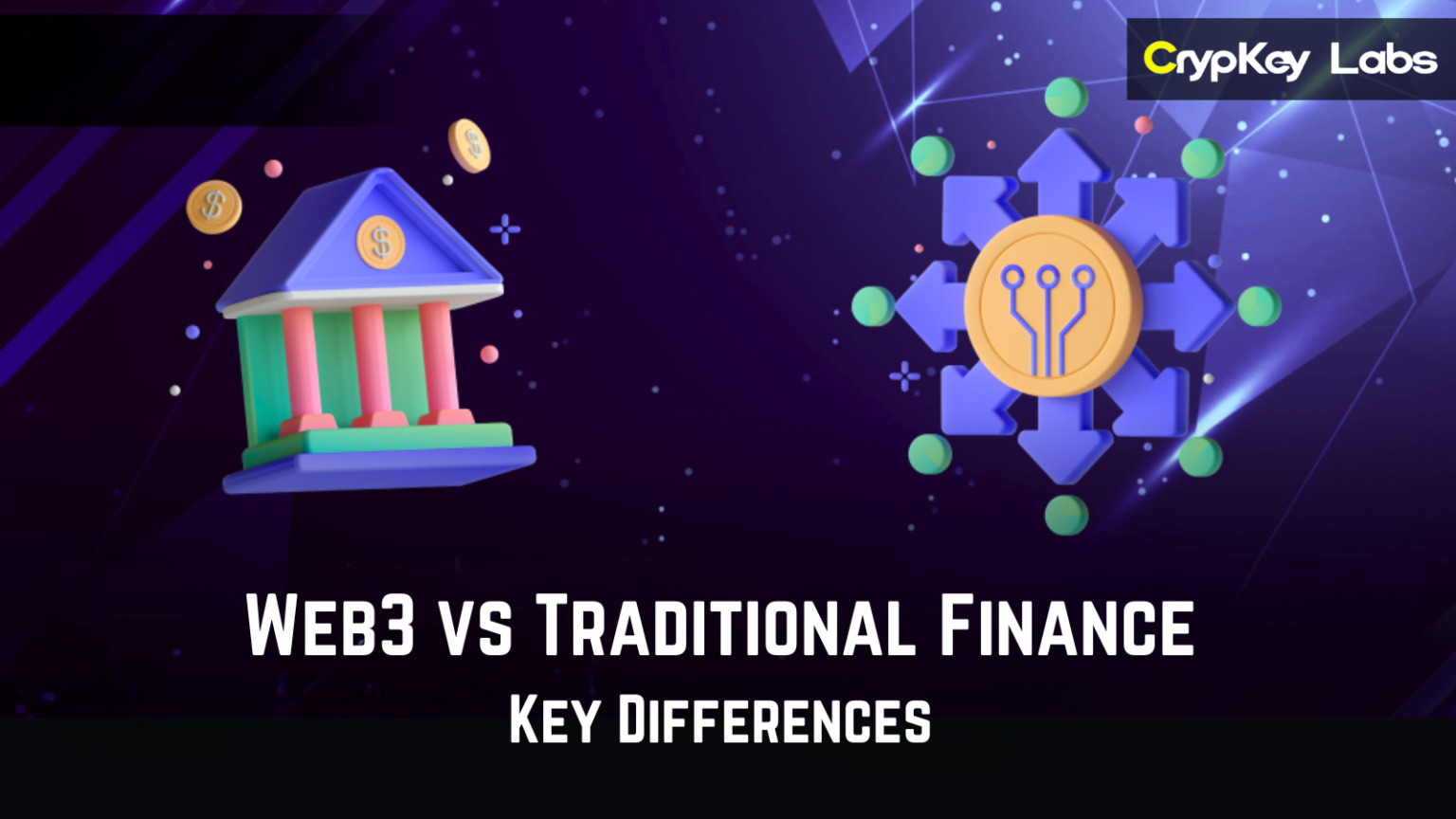In recent years, Web3 has made waves as a transformative approach to finance, sparking interest, curiosity, and debate. This new model aims to shift control from centralized institutions to individuals, promising financial freedom, transparency, and broader access. But what really sets Web3 apart from traditional finance?
In this blog, we’ll take a closer look at how Web3 differs from traditional finance and what these differences mean for the future of money.
What is Traditional Finance?
Traditional finance, or “TradFi,” includes all the centralized financial systems we’re used to, like banks, stock markets, and payment services. When you use a bank, transfer money through a remittance service, or invest in stocks, you’re part of the traditional finance ecosystem. It’s a model that’s been refined over centuries, emphasizing regulation, stability, and, in many ways, a sense of security.
However, traditional finance relies heavily on intermediaries, which can slow things down, add costs, and create barriers for people who don’t have access to formal banking systems. Despite its strengths, TradFi can sometimes feel exclusive and complex.
What is Web3 Finance?
Enter Web3. Simply put, Web3 is the decentralized version of the internet, powered by blockchain technology. In the context of finance, Web3 focuses on giving people more control over their financial assets through Decentralized Finance (DeFi) and smart contracts. This ecosystem is built on the promise of autonomy, allowing individuals to participate in a transparent, peer-to-peer financial network without the need for traditional banks or institutions.
With Web3, transactions happen directly between people on a decentralized network, cutting out intermediaries and reducing fees. This model is fast, accessible, and flexible, and it appeals to those looking for alternatives to the traditional financial system.
Key Differences Between Web3 and Traditional Finance
Let’s break down the main ways Web3 and traditional finance differ.
Decentralization vs. Centralization
One of the most fundamental differences between Web3 and traditional finance is decentralization.
In traditional finance, central banks, commercial banks, and regulatory institutions oversee and control financial operations. They make decisions, set policies, and regulate activities. This centralized approach provides structure and stability but also requires individuals to place trust in these institutions.
On the other hand, Web3 operates on a decentralized model, where control is distributed across a network of participants (often called nodes). Using blockchain technology, Web3 enables peer-to-peer transactions without a central authority. This shift allows individuals to retain control of their assets and data, fostering a system built on transparency and personal empowerment.
Control and Ownership of Assets
Traditional finance relies on custodians like banks to hold and manage your money. While this provides some convenience, it also means you’re trusting a third party with your assets. If a bank fails or there’s a cyberattack, your money could be at risk.
Web3, however, places control directly in the hands of users. With tools like cryptocurrency wallets, you can hold, transfer, and manage your assets independently, without needing a third party. Wallets are secured through cryptography, giving you sole control over your funds, though with the added responsibility of securing them.
Transparency and Trust
In traditional finance, there’s an inherent level of trust placed in banks, governments, and other institutions to act in the best interest of their clients and citizens. However, the inner workings of financial institutions are often opaque to the average person, making it hard to know how money is being handled or if there are hidden fees.
Web3 addresses this by using public ledgers on blockchains, where every transaction is recorded and accessible for anyone to verify. This transparency allows users to track their funds in real-time and fosters a higher level of trust, as actions and balances are visible on the blockchain for all to see.
Access and Inclusion
One of the biggest limitations of traditional finance is its inaccessibility to large segments of the global population. In many parts of the world, people lack access to banking services due to high costs, lack of infrastructure, or government restrictions. Traditional finance can also exclude people based on credit scores, income, or location.
Web3 aims to create an open financial system that anyone with an internet connection can access. By removing intermediaries and geographical limitations, Web3 opens up financial opportunities for the unbanked and underbanked, allowing more people to participate in global finance.
Innovation and Flexibility
Traditional finance has a long-standing structure that prioritizes stability and safety. While this makes it dependable, it also means change is often slow and heavily regulated. Introducing new financial products or services can take years, due to extensive regulatory requirements and risk assessments.
Web3, in contrast, is built for innovation. DeFi platforms and smart contracts allow for rapid development of new financial products, from decentralized exchanges to automated lending platforms. Web3’s flexibility enables creators to experiment with innovative solutions, creating products that can be more responsive to user needs.
Privacy and Security
Privacy is a big issue in traditional finance. Financial institutions store vast amounts of personal data, making them prime targets for cyberattacks. Plus, user data is often shared with third parties, which can lead to privacy concerns.
Web3 leverages cryptographic security measures that allow users to keep control of their data and assets. In Web3 finance, users can transact pseudonymously, meaning they don’t need to share their personal information to interact on the blockchain. While this can enhance privacy, it also comes with risks, as users must safeguard their keys and assets.
Regulatory Environment
Traditional finance operates within a clearly defined regulatory framework designed to protect consumers and ensure market stability. These regulations can be restrictive but also offer safety nets.
Web3, however, is still developing its regulatory structure. Different countries are approaching Web3 and cryptocurrency regulation in varied ways, leading to an uncertain environment. While this allows for flexibility, it also creates risks, as Web3 projects might face new legal hurdles that could impact users.
Pros and Cons of Web3 Finance
While Web3 offers exciting new possibilities, it’s not without its drawbacks. Here’s a quick look at some of the pros and cons:
Pros:
- Greater control over assets.
- Enhanced transparency and privacy.
- Broader access to financial services.
Cons:
- High volatility of crypto assets.
- Lack of consumer protections and legal clarity.
- Increased responsibility for asset security.
Pros and Cons of Traditional Finance
Traditional finance also has its pros and cons. Here’s how it compares:
Pros:
- Stability and established regulatory frameworks.
- Consumer protections in place.
- Widely accepted and integrated into daily life.
Cons:
- Limited transparency and higher fees.
- Exclusive, with barriers to entry for some populations.
- Slow pace of innovation.
The Future: Can Web3 and Traditional Finance Coexist?
With Web3 on the rise, there’s ongoing debate about whether it will replace traditional finance or if the two can coexist. It’s possible that both models could merge, with traditional institutions incorporating blockchain and Web3 principles, creating a hybrid system.
Some banks are already exploring ways to integrate blockchain for greater transparency and efficiency, and even governments are considering Central Bank Digital Currencies (CBDCs). In the future, Web3 and traditional finance could complement each other, offering a broader range of options for consumers.
Conclusion
Web3 and traditional finance are two very different approaches to managing money, each with unique strengths and limitations. Web3 finance offers an exciting vision of a decentralized, transparent financial system that empowers individuals, while traditional finance provides stability, security, and regulatory oversight. As the financial world evolves, it’s likely we’ll see elements of both models shaping the future of finance.
Whether you’re intrigued by the autonomy of Web3 or the stability of traditional finance, understanding these differences helps you make informed decisions about how you want to manage and diversify your money in the digital age.







